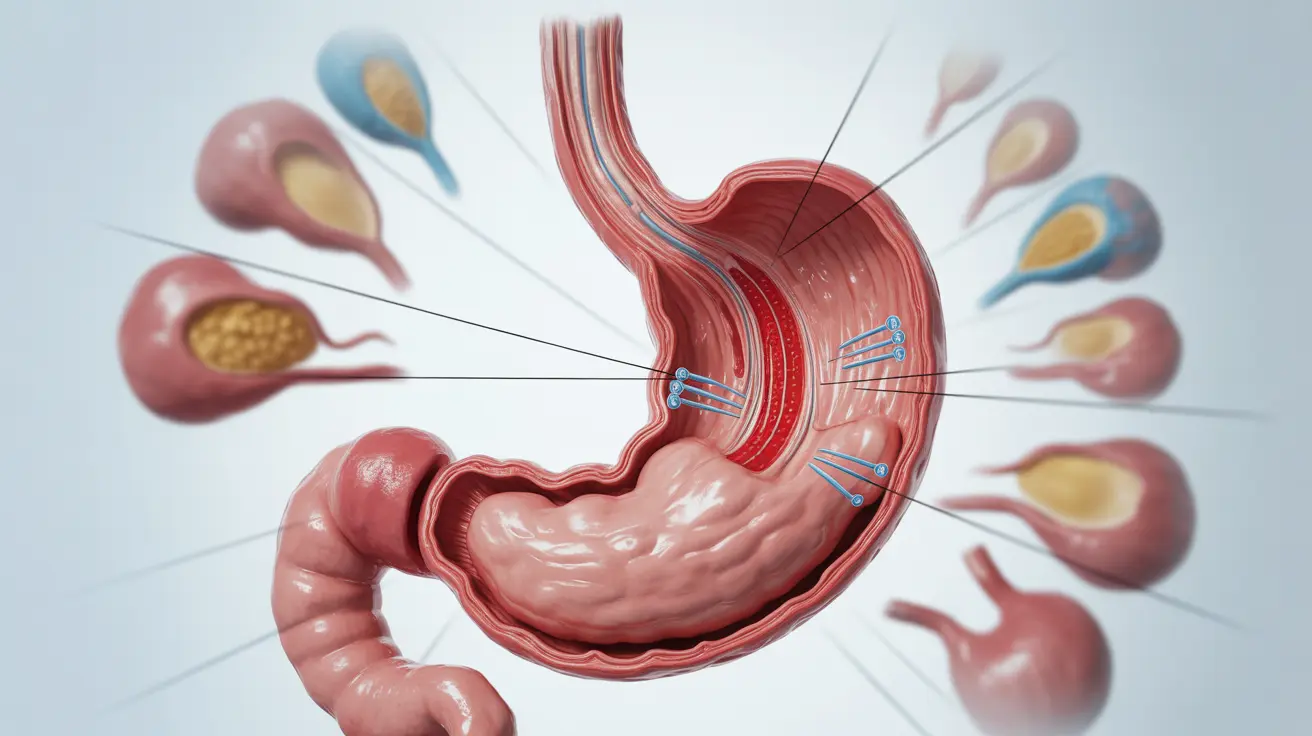The human stomach is a remarkably adaptable organ that can significantly change its size to accommodate different amounts of food. While many people wonder about their stomach's capacity, the answer isn't as straightforward as you might think. Understanding how much food your stomach can hold involves exploring its elastic nature and the various factors that influence its capacity.
In this comprehensive guide, we'll explore the fascinating mechanics of stomach capacity, examining how it changes from person to person and what influences its ability to expand and contract. We'll also look at how this vital organ adapts to our eating habits and signals when we've reached our limits.
The Normal Stomach Capacity
The average adult stomach typically has a baseline volume of about 75 milliliters when empty. However, it can expand significantly during meals to accommodate food and liquid. At maximum capacity, a healthy adult stomach can stretch to hold between 1 to 1.5 liters of food and liquid, roughly equivalent to 4-6 cups.
This impressive elasticity is due to the stomach's muscular walls and their ability to relax and expand as needed. The actual amount of food your stomach can hold varies based on several factors, including your eating habits and physical characteristics.
Factors Affecting Stomach Capacity
Physical Characteristics
Several physical factors influence how much food your stomach can hold:
- Body size and height
- Age and gender
- Natural variations in stomach muscle tone
- Overall physical condition
Eating Habits and Lifestyle
Your regular eating patterns can significantly impact your stomach's capacity:
- Meal frequency and timing
- Portion sizes
- Speed of eating
- Types of food consumed
How the Stomach Adapts to Food Intake
When you eat, your stomach undergoes several changes to accommodate the incoming food:
- The muscular walls relax and expand
- Digestive enzymes are released
- Stomach muscles contract to mix food with digestive juices
- Stretch receptors signal fullness to the brain
The Stretching Process
As food enters your stomach, specialized stretch receptors in the stomach wall monitor the increasing volume. These receptors communicate with your brain through the vagus nerve, helping regulate appetite and satiety signals. This complex system helps prevent over-eating under normal circumstances.
Stomach Size Through Different Life Stages
The stomach's capacity varies significantly throughout life:
- Newborns: 1-2 ounces (30-60 ml)
- Infants: 4-5 ounces (120-150 ml)
- Young children: 10-12 ounces (300-360 ml)
- Adolescents: Gradually increasing to adult capacity
- Adults: 1-1.5 liters at maximum capacity
Frequently Asked Questions
How much food can the adult stomach typically hold when fully expanded?
An adult stomach can typically hold between 1 to 1.5 liters (about 4-6 cups) of food and liquid when fully expanded. However, this capacity can vary significantly between individuals.
What factors affect the size and capacity of the stomach in different people?
Stomach capacity is influenced by factors including body size, age, gender, eating habits, physical condition, and individual variations in stomach muscle tone. Regular eating patterns and portion sizes can also affect how much the stomach can comfortably hold.
How does the stomach stretch and signal fullness after eating large meals?
The stomach has specialized stretch receptors in its walls that monitor expansion during eating. These receptors send signals through the vagus nerve to the brain, triggering feelings of fullness. The stomach's muscular walls can gradually stretch to accommodate incoming food while maintaining these important feedback mechanisms.
How does stomach size in infants and children compare to adults?
Infant stomachs are significantly smaller, starting at just 1-2 ounces in newborns and gradually increasing to 4-5 ounces in older infants. Young children's stomachs can hold 10-12 ounces, and capacity continues to increase through adolescence until reaching adult size.
Can the stomach expand beyond its normal capacity, and what happens when it does?
While the stomach can temporarily stretch beyond its typical capacity, doing so can cause discomfort, pain, and potential complications. Excessive stretching may lead to bloating, nausea, and in extreme cases, could potentially damage the stomach's muscular walls. It's important to eat within normal capacity limits to maintain healthy digestive function.




